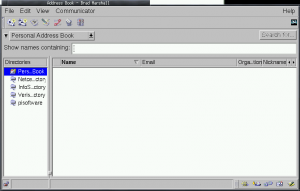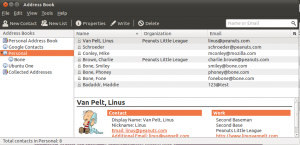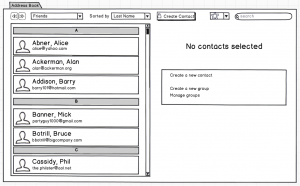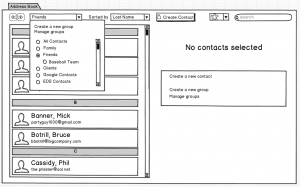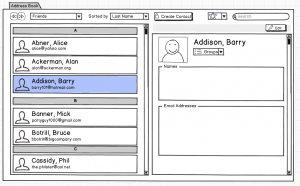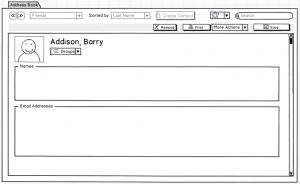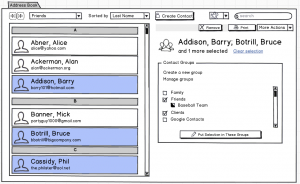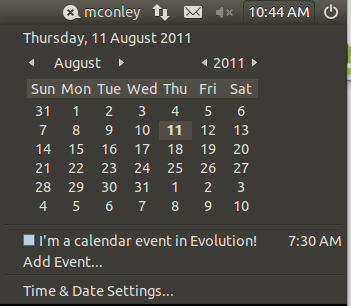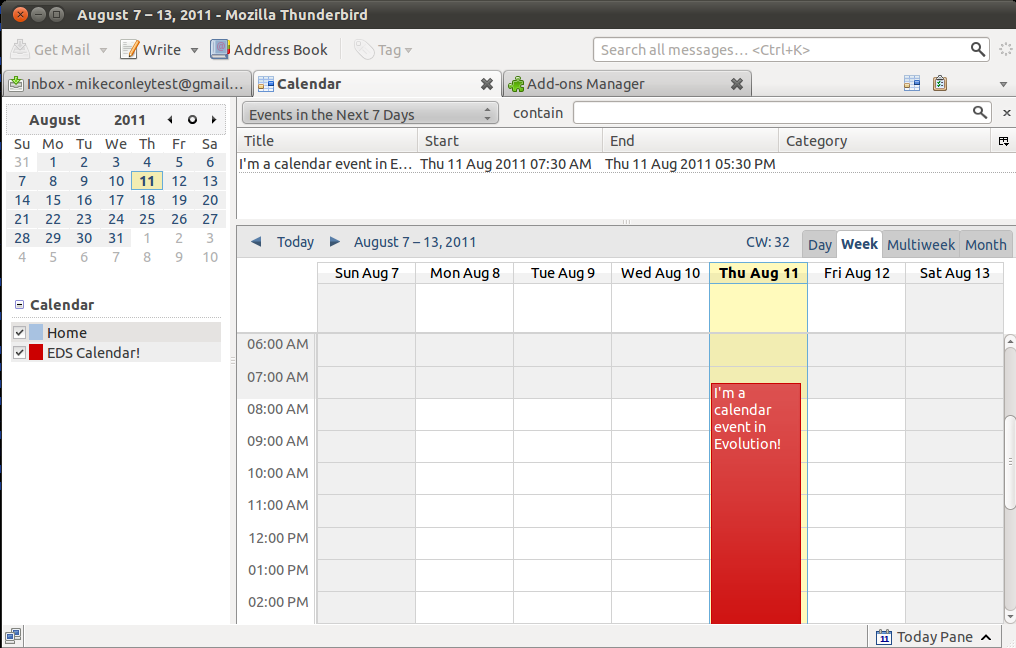So yesterday I posted some mock-ups for a new Thunderbird address book design, and I got a bunch of really awesome, useful feedback.
Probably what rang out loudest for me was that I don’t really have any data on how real users actually use Thunderbird’s address book. I know how I use it, but that’s about it. In fact, I talked a Thunderbird user the other day who didn’t even know that the Thunderbird address book existed. Go figure.
And here I went and jumped the gun, and tossed together some mock-ups.
If there’s anything that my grad supervisor Greg Wilson taught me, it’s not to jump to conclusions (or mock-ups) when we don’t have any data to back it up. I’m a scientist, damn it, and that’s just how we roll.
Firefox has this great add-on called Test Pilot that lets Firefox users volunteer to have data periodically collected from them. Work to get Test Pilot working for Thunderbird is underway, and I think that’d be an awesome tool for gathering feedback about how users use the address book.
Some questions I’d want answered, right off the top of my dome, in no particular order:
- Does anybody actually use Thunderbird’s address book?
- When someone is using the address book, what are they likely doing?
- Looking for a contact?
- Sorting and organizing their contacts?
- Creating or editing contacts?
- Other?
- Do people use mailing lists? If so, how many do they tend to have?
- How many address books do people tend to have?
- How many address books do people want to have?
- How many contacts to people tend to have in their address books?
- Is it important for people to be able to group their contacts into sets, like “Family”, “Friends”, “Acquaintances”, “Employees”, “Co-workers”, etc?
- Given several address books, where each address book has some large number of contacts, how quickly can an individual contact be found?
- How much switching back and forth from mouse and keyboard is required to create a new contact, or to edit an old contact?
- How important is it for Thunderbird’s contacts to be synchronized with other contact services, like Google Contacts or the OSX address book?
- Or is it sufficient just to import them?
- How important is it for Thunderbird’s contacts to be synchronized with user’s mobile devices?
- On average, how long does it take to create a new contact?
- On average, how long does it take to edit a contact?
- On average, how much time are users spending in the address book?
- What fields do most users want to associate with a contact?
- What are the top 10 complaints about Thunderbird’s address book?
- What are the top 10 best things about Thunderbird’s address book?
What are some other questions I should try to get answered?
UPDATE (Aug 29 – 10:00EST)
I’ve gotten some awesome feedback on this post, and some new questions to add to my list. Here they are, in no particular order:
- What is the main way in which Thunderbird users use and manipulate their address books?
- Through the main address book interface
- Through the contacts sidebar in the compose window
- Through the inline contact editor within a message header
- Other?
- If the answer to the above is anything other than 1, is it possible that the address book manager is not needed? Or does not need to be as complicated as it already is?
- How many duplicate contacts does the average user possess (where a duplicate contact is a contact with the same e-mail address, or possibly the same name)
- How frustrating is it to add a contact in Thunderbird?
- How frustrating is it to edit a contact in Thunderbird?
- How frustrating is it to search for a contact in Thunderbird?
- How often do users want to create a contact based on a pre-existing one? Example – creating co-workers, with similar fields for work addresses, etc, but different names, phones, etc.

